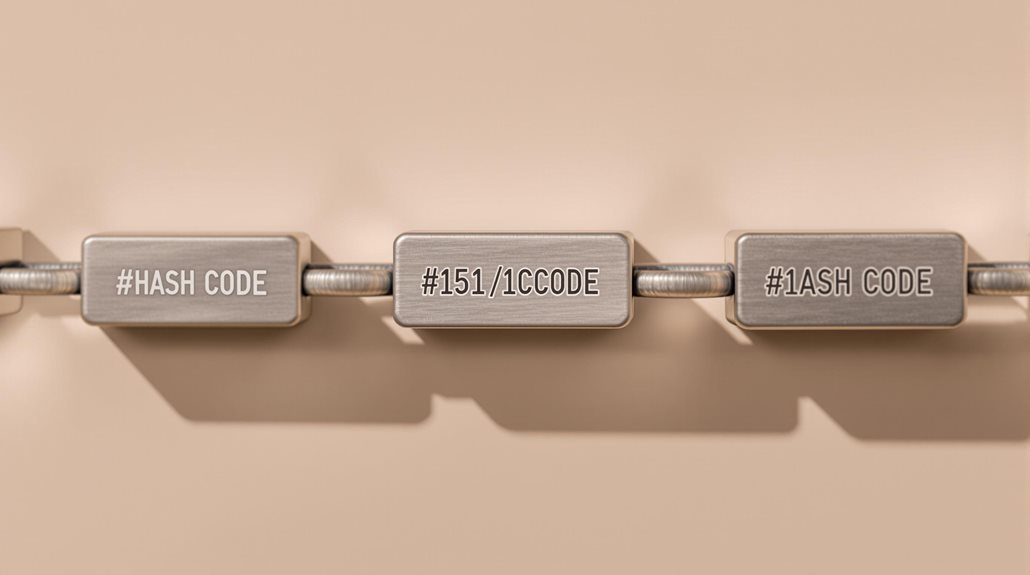Blockchain protocols are digital rulebooks that control how cryptocurrency networks operate. They're like instruction manuals that tell computers how to share information and validate transactions securely. These protocols guarantee that all participants follow the same rules when moving digital assets or data across the network. From Bitcoin to Ethereum, each protocol serves different purposes, offering unique features for tasks like smart contracts or high-speed transactions. The world of blockchain protocols continues to expand with new innovations.

At their core, blockchain protocols are the rulebooks that make cryptocurrency networks work. They're like instruction manuals that tell everyone how to share information, validate transactions, and keep the network secure. These protocols create the foundation for cryptocurrencies and other blockchain applications by setting up clear guidelines for how computers in the network should interact with each other.
The basic building blocks of blockchain protocols include several key parts. First, there are nodes, which are computers that participate in the network. Then there are transactions, which represent the movement of data or value between users. These transactions get bundled into blocks, which are like digital containers. The network uses consensus mechanisms to make sure everyone agrees on which transactions are valid, and cryptography keeps everything secure and private. Properly designed protocols enable Layer 2 solutions to significantly improve transaction speeds and scalability. Each block contains a unique cryptographic hash that links it to previous blocks, creating an unbreakable chain.
There are many different blockchain protocols out there, each with its own special features. Bitcoin was the first one, and it's still the most famous cryptocurrency protocol today. Ethereum came along later and added something called smart contracts, which let people build decentralized applications. Other protocols like Polkadot focus on connecting different blockchains together, while Cardano uses a special system called proof-of-stake to be more environmentally friendly. Solana is known for being really fast and handling lots of transactions quickly. Modern protocols often choose Proof of Stake over traditional mining to reduce energy consumption and increase accessibility.
These protocols are changing the way we think about digital transactions and data management. They make it possible to send money and other valuable things directly between people without needing banks or other middlemen. This has led to the creation of many new cryptocurrencies and something called decentralized finance, or DeFi for short. DeFi applications let people borrow, lend, and trade without traditional financial institutions.
The impact of blockchain protocols goes beyond just money and finance. They're being used in lots of different industries because they offer some unique benefits. When information is stored on a blockchain, it can't be changed or deleted, which makes it very trustworthy. Everything that happens is also visible to everyone in the network, which creates transparency.
This has made blockchain protocols useful for things like supply chain management, voting systems, and record-keeping. As more people understand and use these protocols, they continue to drive innovation and create new possibilities for how we handle digital information and transactions.
Frequently Asked Questions
How Secure Are Blockchain Protocols Against Quantum Computing Attacks?
Today's blockchain protocols are secure against quantum computing attacks because current quantum computers aren't powerful enough to break them.
However, there's a future risk. Quantum computers with millions of qubits could potentially crack the cryptography that keeps blockchains safe.
The good news is that developers are already working on quantum-resistant solutions, including new cryptographic methods that even future quantum computers won't be able to break.
Can Different Blockchain Protocols Communicate and Interact With Each Other?
Different blockchain protocols can communicate with each other through special systems.
Cross-chain bridges and protocols like IBC (Inter-Blockchain Communication) make it possible for separate blockchains to share information and transfer assets.
Networks like Polkadot and Cosmos have built-in features that help blockchains work together.
While it's technically possible, there are still challenges due to different standards and security concerns that developers are working to solve.
What Happens if a Blockchain Protocol Has a Critical Software Bug?
A critical software bug in a blockchain protocol can cause serious problems.
It might crash the network, allow hackers to steal cryptocurrency, or let bad actors manipulate transactions. These bugs have led to losses worth hundreds of millions of dollars.
The whole network could be at risk until the bug is fixed. Nodes need to update their software quickly to stay safe, and some bugs can damage people's trust in the blockchain system.
How Much Energy Do Different Blockchain Protocols Consume Compared to Each Other?
Different blockchain protocols use vastly different amounts of energy.
Proof-of-Work chains like Bitcoin and pre-merge Ethereum are the biggest energy users, consuming as much power as entire countries. Bitcoin uses about 707 kWh per transaction.
In contrast, Proof-of-Stake chains like post-merge Ethereum and Cardano use 99% less energy.
Alternative protocols like Solana and Hedera use even less, requiring just a tiny fraction of electricity per transaction.
Can Blockchain Protocols Be Upgraded Without Creating a Hard Fork?
Yes, blockchain protocols can be upgraded without creating a hard fork through several methods.
Soft forks are backwards-compatible changes that don't split the network.
Layer 2 solutions add features on top of existing blockchains without modifying the base layer.
Many modern blockchains also include built-in governance systems and protocol-level upgrade mechanisms.
These allow for smooth updates while maintaining network consensus and avoiding the need for contentious hard forks.





